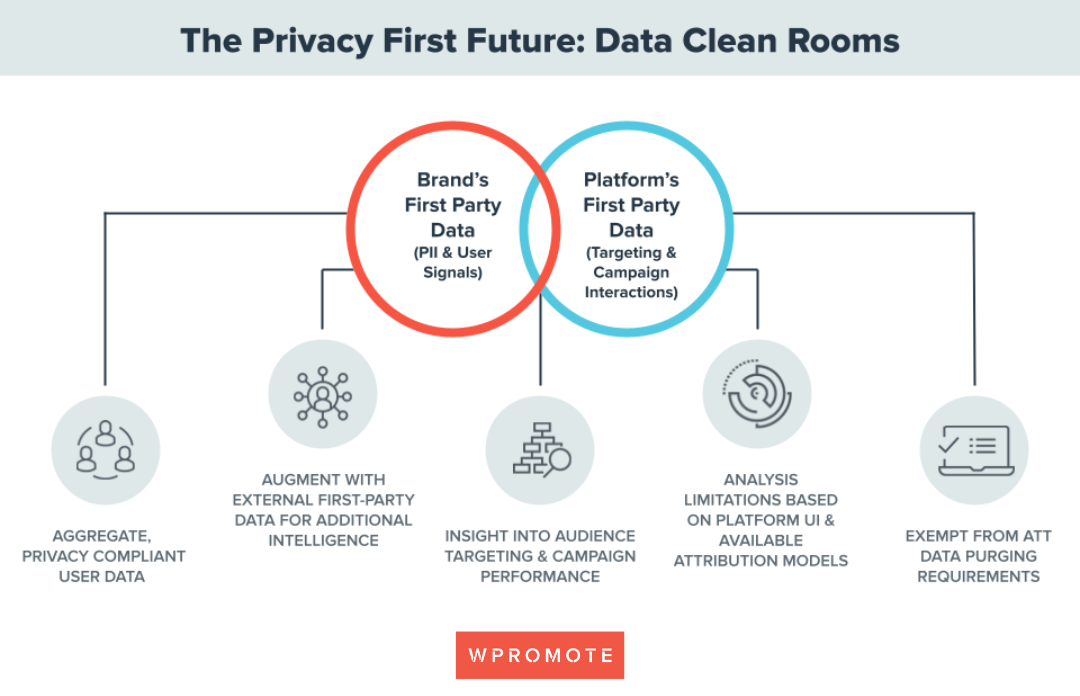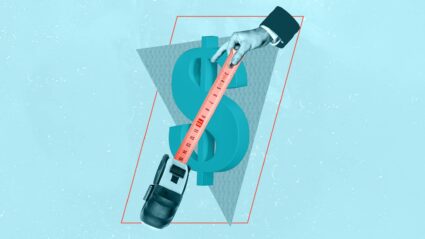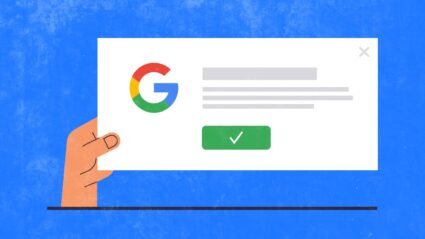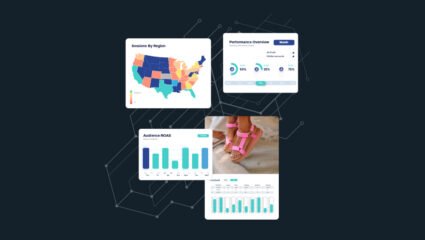Data is the name of the game when it comes to marketing in 2024. Businesses with the most comprehensive data solutions are poised to succeed in the ever-changing digital marketing landscape.
But data privacy issues can throw a spanner in the works for brands looking to maximize their measurement, especially as governmental and platform regulations continue to evolve. For businesses that need to share data across organizations, sharing personally identifiable information (PII) directly can lead to security risks like data breaches and privacy issues like getting consent to share customer data with third-party organizations.
So how do you generate insights, evaluate collaboration opportunities, or execute joint marketing campaigns without exposing sensitive business data or your customers’ PII?
One great solution is the data clean room, a secure location where your brand’s first-party data can interact with another company’s first-party data without exposing any PII to the other party.
Wpromote’s VP of Data Strategy & Analytics Drew Ford and Hightouch’s AdTech Lead Ian Maier are joining forces to share their insights on the best use cases for clean rooms–and when you might be better off choosing another data solution.
The perfect fit: use cases for data clean rooms
Clean rooms are an extremely versatile solution; businesses can use them for a wide range of analyses and activations, including internally for performance, business development, and audience targeting and measurement.
A common use case is creating attribution models based on exposures and clicks (for the ad platform) and conversions (from the brand), showing exactly where those conversions are coming from in a privacy-safe way. Another is to analyze and control impression frequency (typically reported in aggregate) for brand advertising.
For media providers, data clean rooms can be a way to give advertisers a privacy-safe method of creating first-party audiences for targeting and suppression. This approach ensures that the media company cannot use the data for any other purpose, like reverse-engineering hashed PII to expose an advertiser’s audience.

Another major use case for clean rooms is modeling and assessing the business impact of collaborating with another company without directly sharing customer data. This preserves the privacy of your customers while also protecting your business—especially in cases where you may be working with a company you can’t trust 100%. If you share data directly, a “frenemy” or a rival company might take that information in bad faith and use it to steal market share from you.
For an example of how you might leverage data clean rooms for your business, imagine you’re a major bank exploring new partnerships to enter into to improve your credit card “perks” offering. You think that offering a year of membership for a major shared rideshare app could drive new credit card signups, and you will take a percentage of each transaction.
With a data clean room, you and your prospective partner can analyze your overlapping customers to answer questions like:
- How many customers do we already share? (e.g. how many will we have to pay for that are already using our credit card?)
- How many customers do they have that we could reach? (e.g. how large is the opportunity for new credit card signups?)
- How much do those prospective customers pay for rides per year? (e.g. how much in merchant fees can we collect if they sign up?)
From there, you can model scenarios to understand the viability and profitability of partnering with a rideshare company to drive signups and collect transaction fees. The rideshare app can also assess the impact of customers switching based on the change in merchant fees they might owe.
Roadblocks: challenges and considerations for data clean rooms
While clean rooms present an amazing opportunity for brands, they’re not without their downsides. One major challenge is finding which platform to use for your clean room.
Several major ad platforms offer data clean rooms that businesses can use to conduct analyses and share data for targeting and attribution, like Amazon Marketing Cloud and Google Ads Hub. These clean rooms are typically free to use and come with pre-set ways to share and use data (although some require spend minimums to grant access).
But many ad platforms don’t offer their own native solution for clean rooms. If you and your partner are both using the same data warehouse (like Snowflake or AWS), you may be able to do it via their native offering, at no additional cost.
If not, you may need to pay for an agnostic solution–which can get pretty pricey. Collaborating with a less-developed ad platform will also require custom development and bespoke modeling to set up.
Beyond the technology itself, it can be hard for businesses to agree on how to set up a clean room: what data needs to be shared, what modeling can be done, how that modeling is done, and what data can be exposed to each party. This often requires extensive business and legal negotiation. A data clean room may provide a seamless solution once negotiations are finished, but the end-to-end process is rarely quick and easy.
If you’re looking to collaborate with others, you also need a way of matching data sets between two (or more) parties before combining data in a clean room. This could be as simple as matching email addresses or phone numbers, but it can also be more challenging: what if the customer has more than one email address? What if the data you’re matching is more complex or needs to be cleaned across data sets?
One solution to this is to use a Universal ID. These providers determine which identifiers (email, phone, etc.) belong to which person and/or household. UID 2.0 is a popular, open-source, and free option developed by The Trade Desk.
No-Gos: when clean rooms aren’t the answer
As great as clean rooms are, they aren’t the solution to every data problem. When deciding whether or not to use a clean room for your data needs, you have to ask yourself if your needs would be better served with another data solution.
Clean rooms work best for facilitating analysis between two or more parties. If you’re working with data from a single party, you don’t need a clean room to analyze that information. For example, if your brand needs to understand data from a retail media network (RMNS), that direct activation is either onsite or the RMN is pushing that data to a targeting offsite.
If you used a clean room, you’d only be reaching people who overlap between your brand and the RMN, whereas another solution can encompass everyone the RMN has access to.
You might also avoid a clean room:
- When you have an easier and faster privacy-safe method
- When collaboration is not your goal
Get ahead: get started with clean rooms now
If you’ve determined that a clean room is the best solution for you, you can get started with:
- A data source: This could be anything from a data warehouse to an S3 bucket.
- A data clean room: You could use a native clean room (e.g. for attribution on major ad platforms), a warehouse native solution (e.g. Snowflake DCR or AWS), or an agnostic DCR (e.g. InfoSum, Habu, etc.). The one you choose may depend on your use case.
- An activation platform: Look for a software company like Hightouch to move your data from A to B.
With those essentials in place, you’re ready to get started on your clean room journey and make more informed data decisions.








Responses